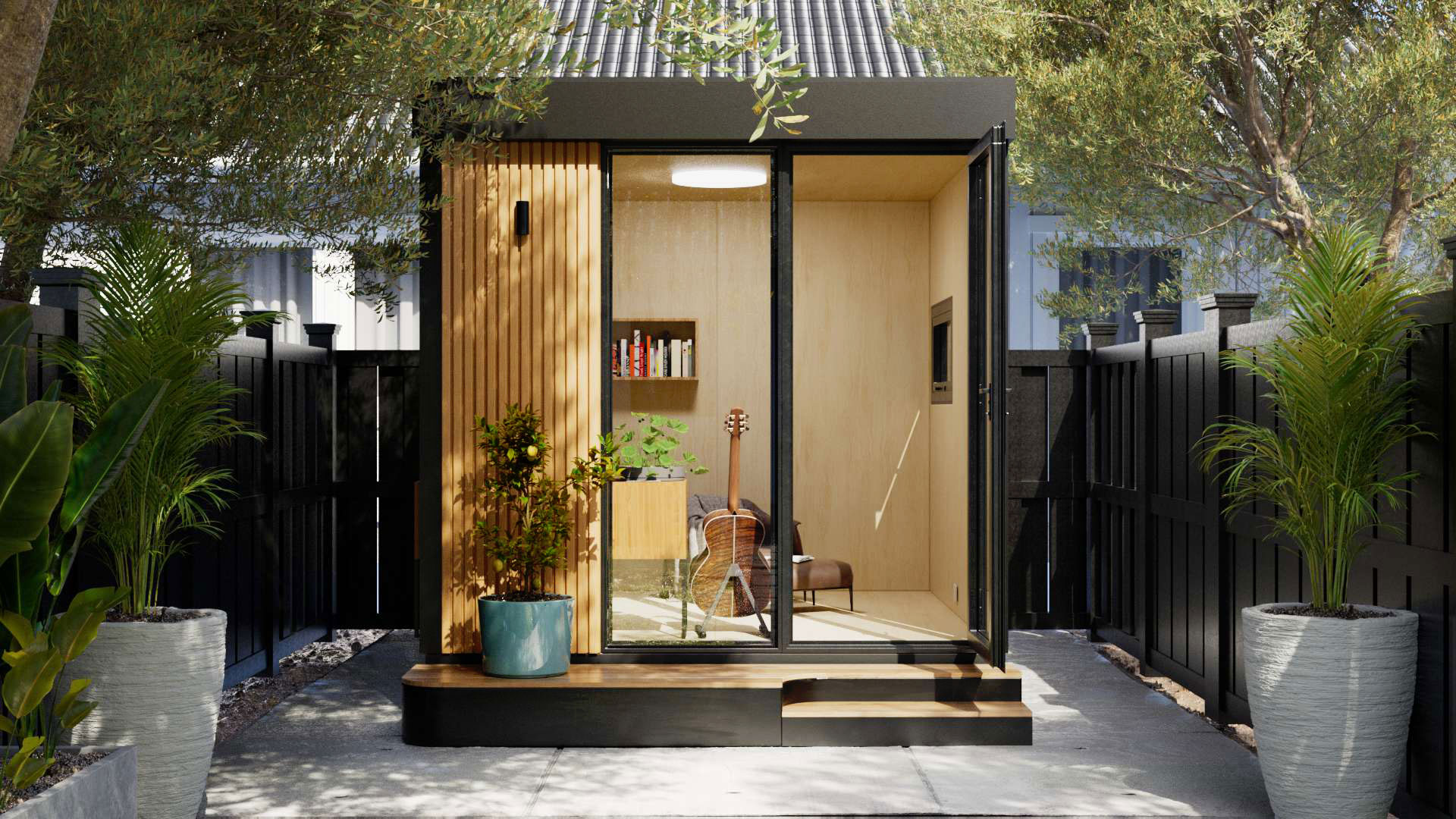
Legalizing Unpermitted ADUs in California & WorkPod Solutions
Table of Contents
- 1. What is an Unpermitted ADU?
- 2. The Legal Risks of an Unpermitted ADU in California
- 3. California’s Path to Legalizing Unpermitted ADUs
- 4. The Process of Legalizing an Unpermitted ADU
- 5. The Cost of Legalizing an Unpermitted ADU
- 6. Autonomous WorkPods: A Legal and Hassle-Free Solution
- 7. Frequently Asked Questions (FAQs)
- 8. Conclusion
California's housing crisis has sparked a surge in the construction of Accessory Dwelling Units (ADUs) as homeowners seek creative solutions to the growing need for more housing. However, the rise of unpermitted ADUs presents challenges for property owners and municipalities alike. This article will explore the issue of unpermitted ADUs in California, specifically in cities like Los Angeles, and discuss the available paths to legalizing these units through new regulations and programs.
For more on the impact of ADUs on the state's housing market, check out ADU housing California. If you're considering alternatives like prefab solutions, explore prefab homes California. Additionally, learn more about permit-free ADUs and how they might offer a quicker route to housing solutions.
1. What is an Unpermitted ADU?
An unpermitted ADU is a secondary unit built on residential property without the necessary approvals or permits from local government agencies. In California, ADUs are additional living spaces that can be attached or detached from the main home. These can range from small backyard cottages to garage conversions, often created to provide extra income or housing for family members.
While unpermitted ADUs are common, they can create significant issues for homeowners—from potential fines to complications with property sales or insurance. Property owners sometimes build without permits to save time and money or because they are unaware of the legal requirements.
Homeowners exploring ADU options in California should be aware of new ADU laws in California 2025, which are set to simplify the process and create more opportunities for compliant construction.
If converting an existing space appeals to you, consider our curated garage ADU design ideas in California, which offer innovative ways to transform your garage into a functional living or working space. Alternatively, a prefab granny flat in California might be the ideal solution for adding extra living space quickly and efficiently.
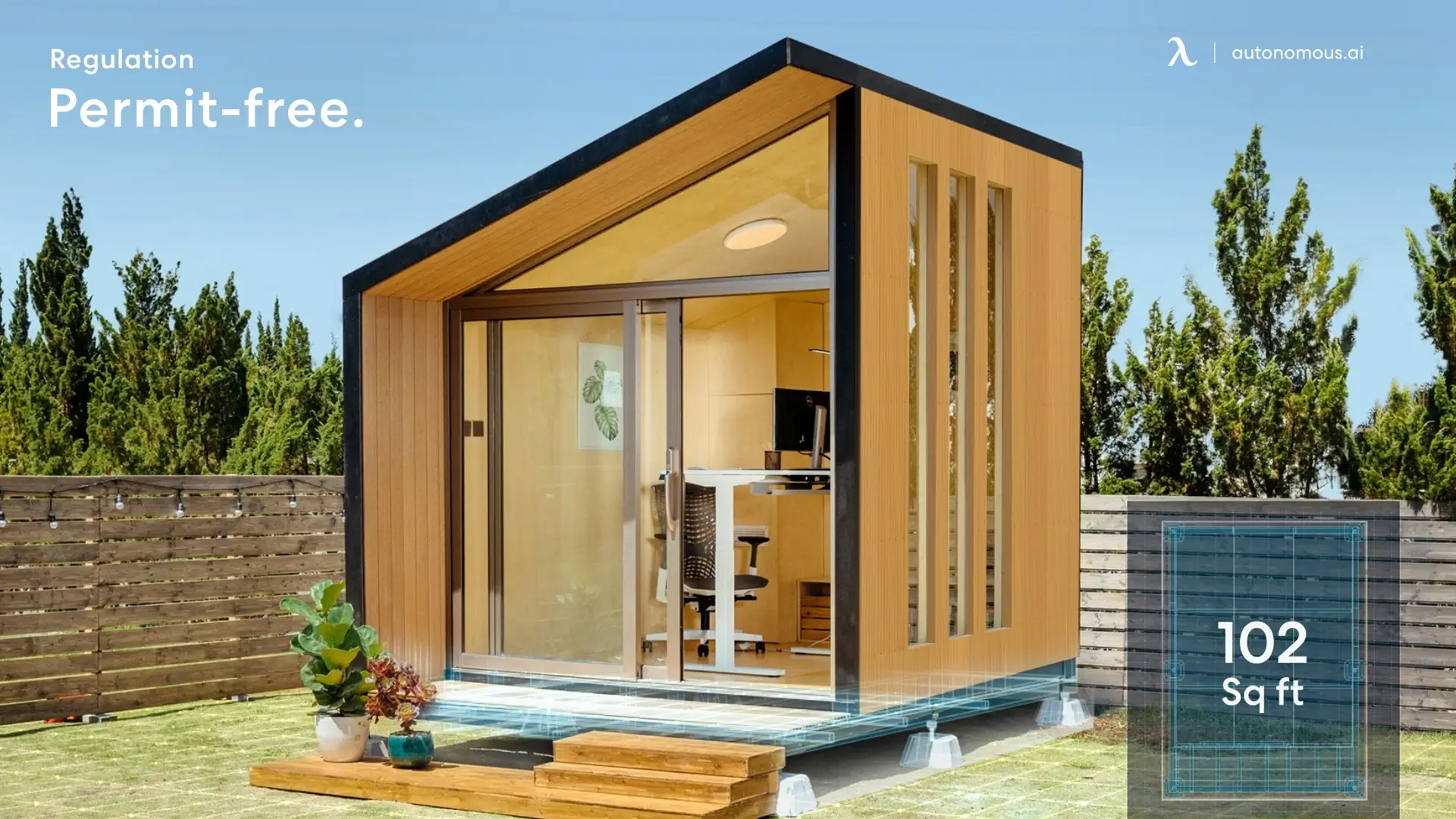
2. The Legal Risks of an Unpermitted ADU in California
Owning or renting out an unpermitted ADU in California can lead to a range of legal problems. Some of the key risks include:
- Fines and Penalties: Building without a permit can result in costly fines. Depending on the local municipality, property owners may be required to pay backdated fees and incur additional penalties.
- Complications with Property Sales: When it comes time to sell, unpermitted ADUs may be flagged during inspections, making it difficult to find a buyer or secure financing.
- Insurance Issues: Insurance companies may refuse to cover damages caused by unpermitted units, leaving homeowners vulnerable to unexpected expenses.
- Legal Gray Area: Unpermitted ADUs can create confusion for landlords and tenants regarding safety standards and tenant rights.
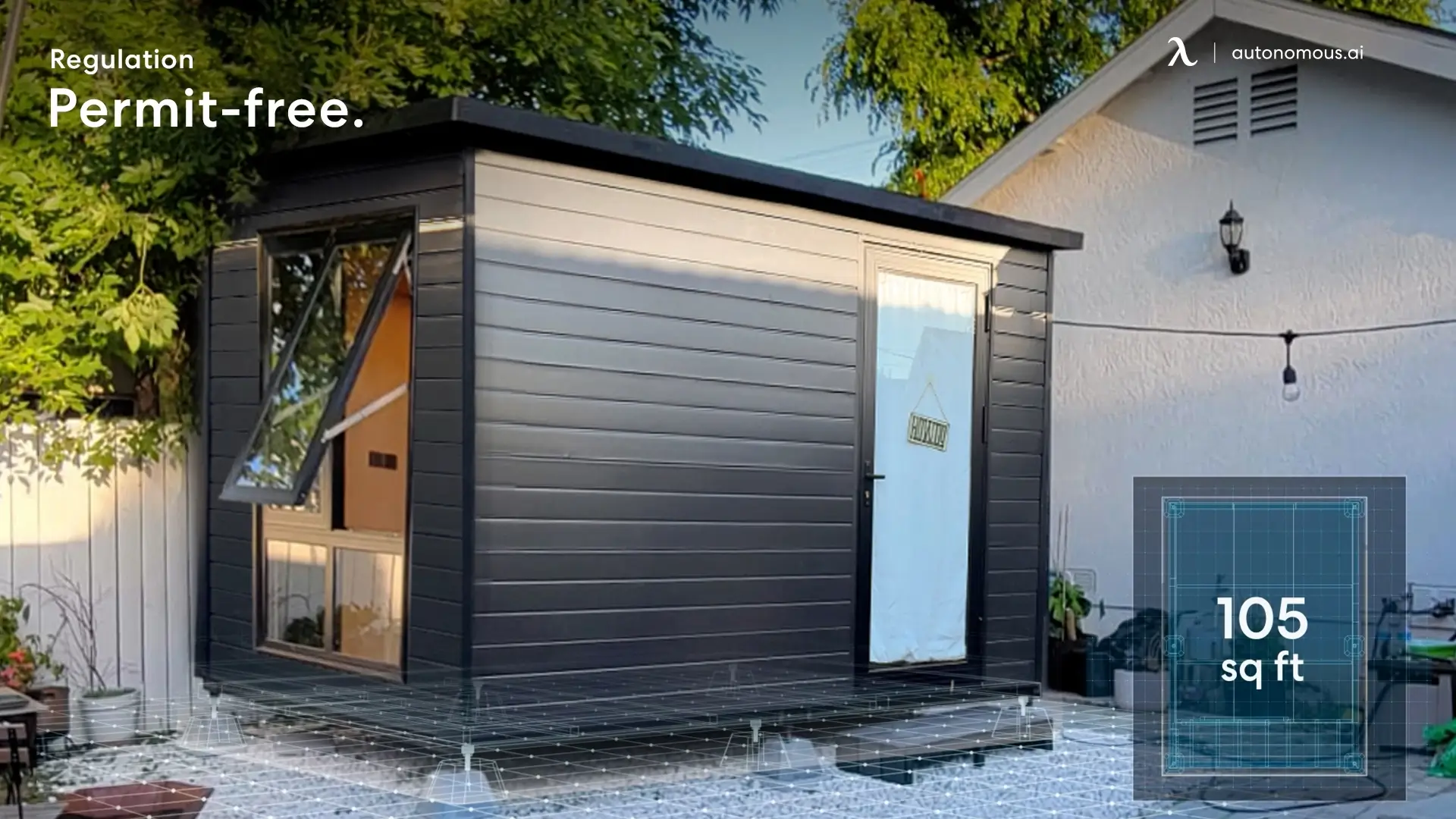
3. California’s Path to Legalizing Unpermitted ADUs
For homeowners with unpermitted ADUs, California has taken steps to address the issue and streamline the legalization process. In 2017, the Unpermitted Dwelling Unit (UDU) Ordinance was introduced in Los Angeles, creating a voluntary program for owners to legalize unpermitted units, provided they meet specific life safety requirements. The goal is to add affordable housing to the market while ensuring safety and compliance.
In 2024, Assembly Bill 2533 (AB 2533) was passed to further expand the amnesty program for unpermitted ADUs and Junior ADUs (JADUs) built before January 1, 2020. Key benefits of AB 2533 include:
- Simplified Habitability Standards: Local agencies now use more flexible habitability standards instead of rigid building codes to evaluate the safety of ADUs.
- Waived Fees: Retroactive impact and connection fees are waived in most cases, making it easier for homeowners to afford the legalization process.
- Expanded Eligibility: The program now includes ADUs and JADUs built between January 1, 2018, and January 1, 2020, expanding the scope of units eligible for amnesty.
This provides homeowners with a more affordable and accessible path to legalize their unpermitted ADUs, reducing the burden of compliance.
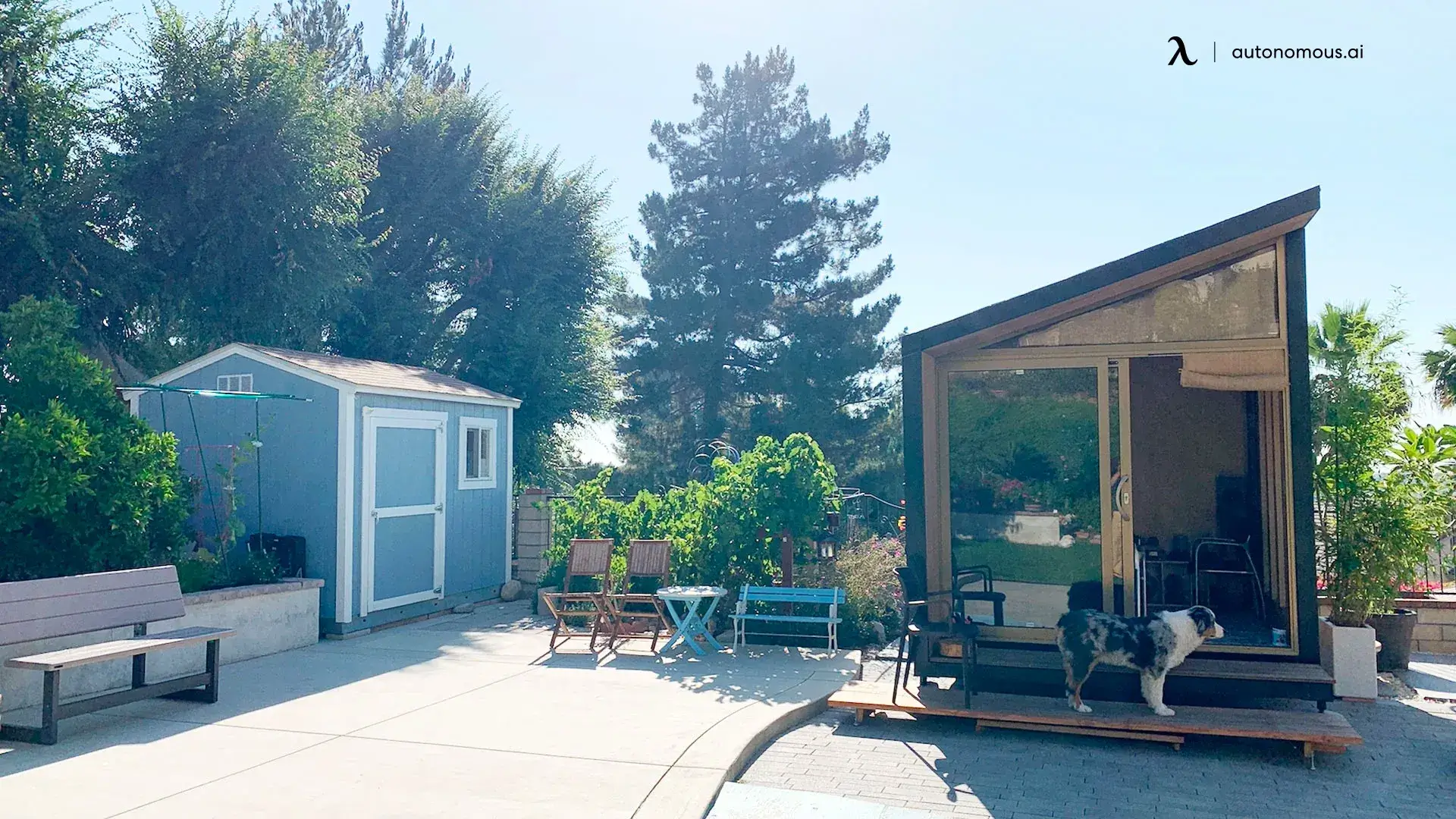
4. The Process of Legalizing an Unpermitted ADU
Legalizing an unpermitted ADU requires navigating a clear process that includes inspections, safety upgrades, and local approval. Here are the basic steps involved:
- Assess the Existing ADU
Start by evaluating whether your ADU meets basic safety standards, including proper electrical, plumbing, and sewage systems. For guidance on meeting these standards, check out our detailed guide to ADU electrical requirements in California.
- Create Plans for Changes
If your ADU doesn't currently meet the necessary standards, you'll need to draw up plans to bring it up to code.
- Submit Plans for Approval
Once your plans are complete, submit them to your local planning department for review and approval.
- Schedule Inspections
After receiving approval, schedule safety inspections to ensure your ADU complies with building codes and safety requirements.
- Make Necessary Upgrades
If inspections reveal any deficiencies, complete the required upgrades—this may involve additional electrical work, plumbing fixes, or other adjustments. Familiarize yourself with Title 24 ADU requirements for energy efficiency and building standards in California.
- Obtain Legalization
Once all inspections are passed and required upgrades are completed, your ADU can be officially legalized.
Understanding additional regulations can further smooth the legalization process. For example, AB 1033 plays a role in changing the housing landscape in California, while SB 9 offers guidance for property owners. Also, if your property is part of a Homeowners Association in California, be sure to check any specific HOA rules that might affect your ADU plans.
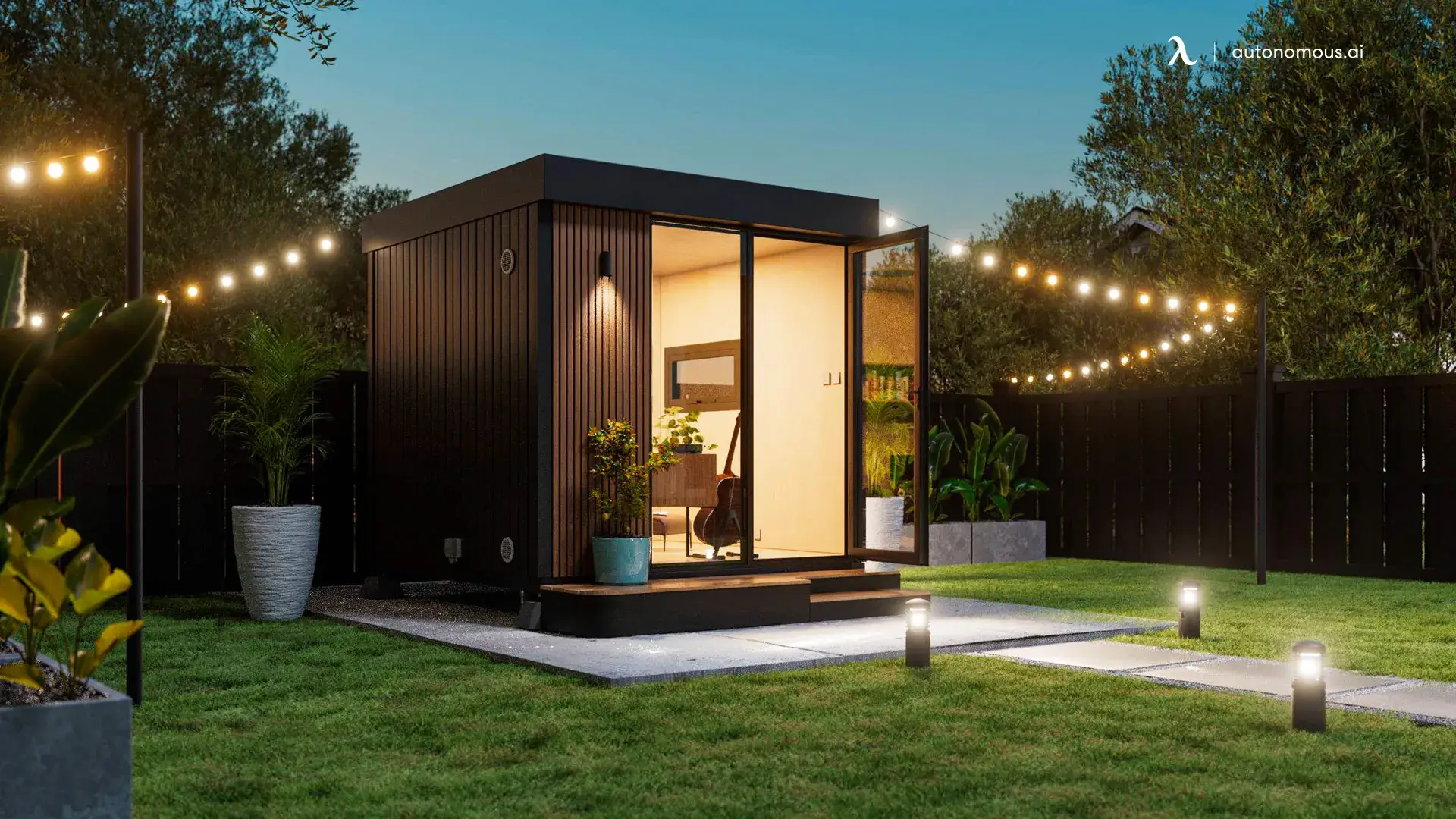
5. The Cost of Legalizing an Unpermitted ADU
Legalizing an unpermitted ADU in California can involve several steps and associated costs. While these costs vary based on the complexity of the unit and local regulations, here's a quick breakdown of the most common expenses homeowners should expect:
Cost Item | Description | Estimated Cost |
Application & Permit Fees | Fees for submitting plans and receiving approval | $200 - $2,000+ |
Inspection Fees | Fees for mandatory inspections of the ADU | $100 - $500 per inspection |
Upgrades & Repairs | Costs for bringing the ADU up to current safety standards | $500 - $10,000+ |
Architectural Plans | Cost for professional design if structural changes are needed | $1,000 - $5,000+ |
Impact Fees | Fees based on local jurisdiction (may be waived in some cases) | $0 - $10,000+ |
Consultant Fees | Legal or consulting help to navigate the process | $500 - $2,500+ |
Understanding these costs helps homeowners plan for the legalization process and avoid unexpected expenses. Although the initial investment may seem high, legalizing an unpermitted ADU ensures safety, compliance, and long-term value for your property. For instance, if you're wondering how much it costs to build an ADU in California, you'll find a detailed breakdown of expenses that can help you budget accordingly. Additionally, learning about ADU impact fees in California will provide further insight into potential costs that could affect your project.
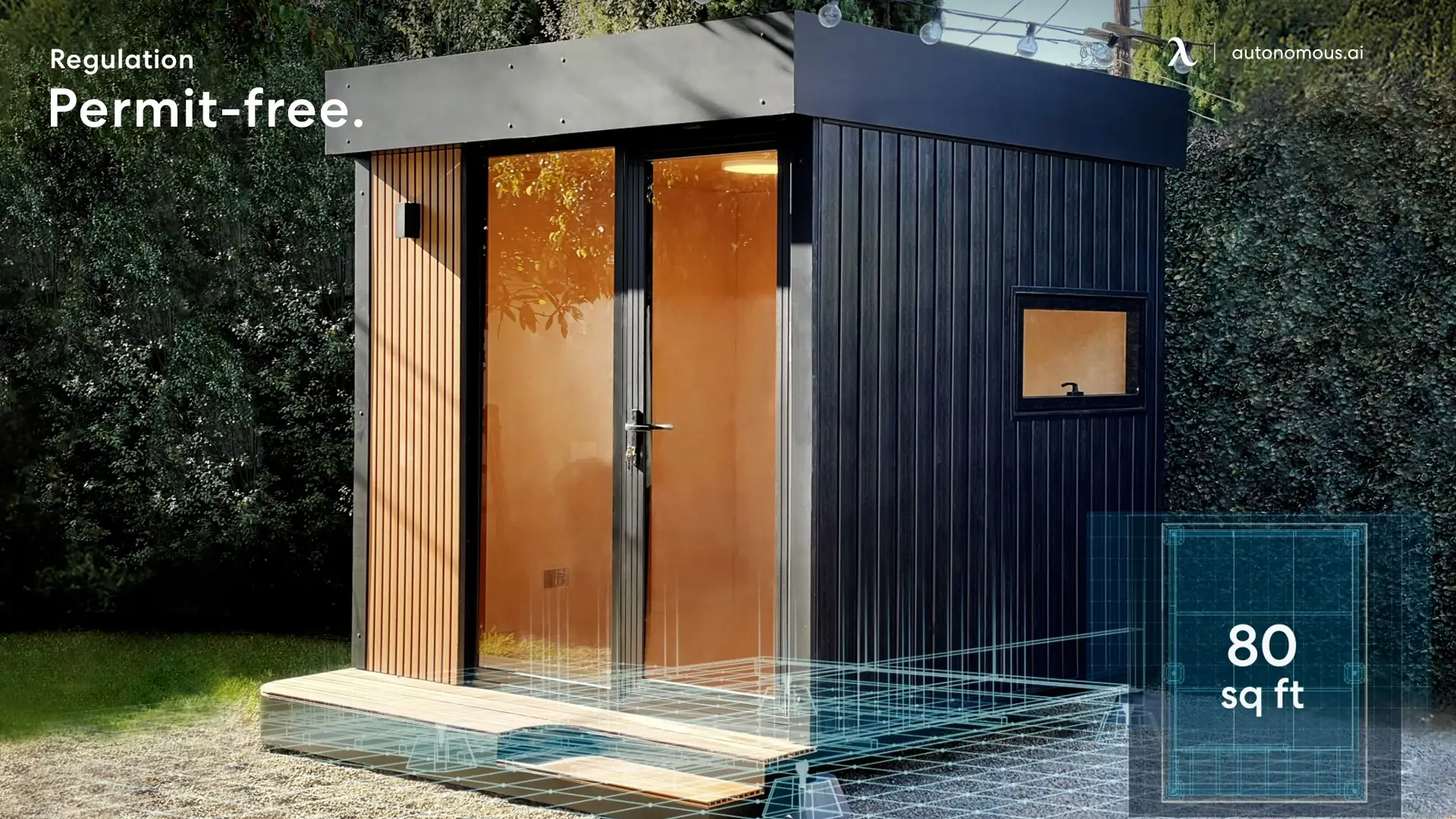
6. Autonomous WorkPods: A Legal and Hassle-Free Solution
For homeowners or professionals seeking additional space without the complexities of traditional ADUs, Autonomous WorkPods offer an ideal solution. These pre-fabricated, versatile units are designed to be legally compliant in many cases, avoiding the often lengthy and expensive permitting process associated with custom-built ADUs. Whether you need a quiet office space, a creative studio, or simply a dedicated retreat from household distractions, Autonomous WorkPods provide a functional, legal, and cost-effective alternative to traditional construction.
For those interested in more traditional ADU options, building an ADU in California provides insight into the process and necessary requirements.
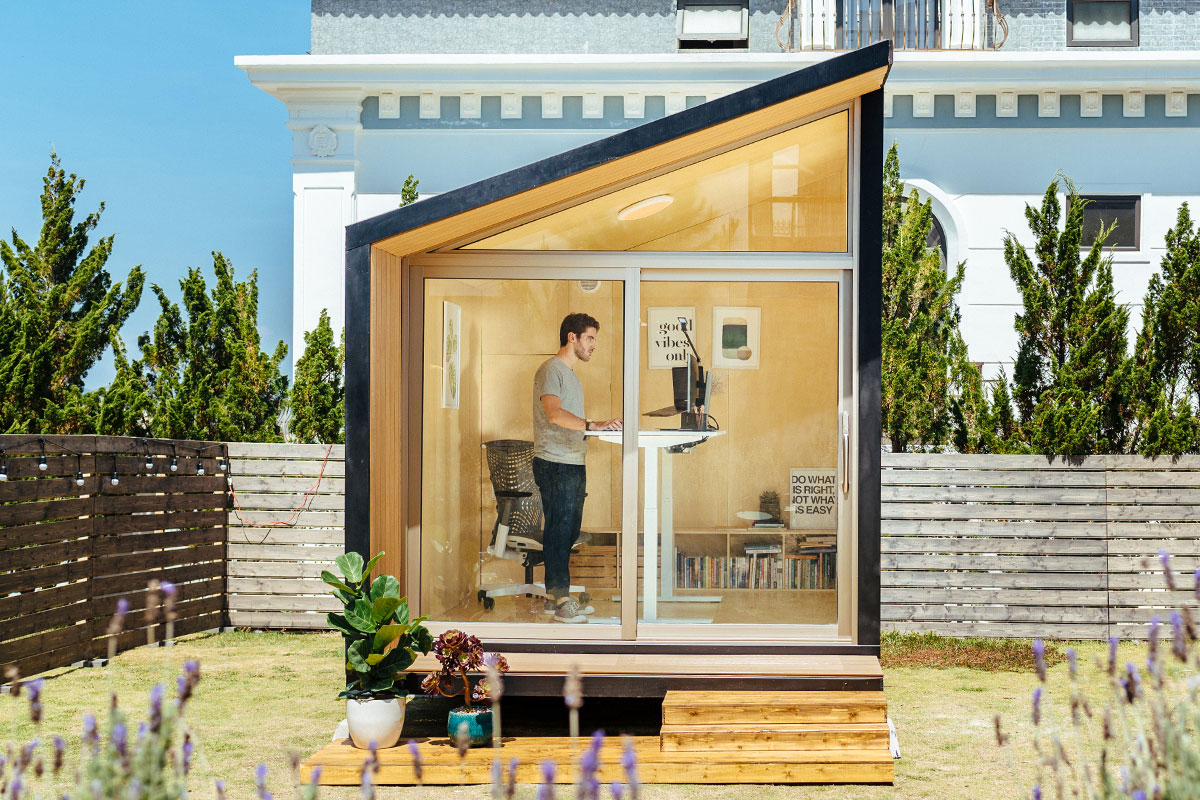
WorkPod
| Overall size | 8.5’W x 12’L x 11’H |
| Floorspace | 102 square feet |
| Ceiling height | 6.8’ to 9.3’ |
| Weight capacity | 2.9 tons |
| Door & Window dimensions, material (include glass) | Main door: 7.5’W x 6.8'H 3 windows: 1.1’W x 7.9’H Window material: Wooden frame, 5/16” tempered glass, composite wood cover Door material: Anodized aluminum frame, 5/16” tempered glass |
| Siding, roof, floor & balcony material | Siding: Plywood 1/2”, wooden frame, honeycomb paper, plywood 3/8”, bitume, housewrap, vinyl siding Roof: Roof shingles Floor: Plywood Balcony: Composite wood |
| Electrical devices | 1 RCB (Residual current breaker) 3 Wall outlet (Universal wall sockets) 1 Ceiling light switch 1 Ceiling light 1 Ventilator switch 1 Ventilator 66ft power cable with 2 connectors |
| Power input | Maximum voltage: 110V AC (US standard) Maximum current: 25A Maximum power dissipation: 2750W |
| Interior furniture | Unfurnished option: 1 Bookshelf, 1 Electrical Cabinet Furnished option: 1 SmartDesk Connect, 1 Autonomous Chair Ultra, 1 Monitor Arm, 1 Cable Tray, 1 Filing Cabinet, 1 Anti-Fatigue Mat, 1 Bookshelf, 1 Electrical Cabinet |
| Compatible with | Portable air conditioner: A/C units with dimensions smaller than 22” L x 20” W x 88” H and a 5.9” vent hole diameter will fit well. Heater: A small personal heater is more than sufficient. |
- Handy homeowners
- Professionals who need a quiet, dedicated space to work from home
- Freelancers who require a focused environment away from household distractions
- Permit-free
- Zero foundation preparation
- Built with weatherproof and soundproof materials
- Pre-wired with ambient lighting and outlets
- Ready in 3 days
Why Autonomists Love Autonomous WorkPods
Permit-Free
One of the standout benefits of Autonomous WorkPods is that they are designed to be permit-free, depending on local zoning laws. Unlike typical ADUs that often require a complex and costly permitting process, these self-contained units can often be installed without needing formal permits. This makes them a hassle-free option for those looking to create additional living or working space quickly and legally.
For homeowners concerned with traditional ADU challenges, issues like minimum and maximum ADU size limits in California and California ADU setback requirements are common hurdles. With Autonomous WorkPods, you can bypass these obstacles while still enjoying a functional and stylish addition to your property.
Zero Foundation Preparation
The installation of an Autonomous WorkPod does not require a foundation, offering significant savings in both time and money. The unit simply sits on a prepared surface—like a flat, level yard or space—making installation easier and faster compared to other modular structures that need extensive groundwork. For homeowners exploring traditional ADU options, consider insights from the best ADU builders in California who often tackle the challenges of foundation preparation.
Weatherproof and Soundproof
Designed with durability in mind, Autonomous WorkPods are built with weatherproof and soundproof materials. Whether you're using the WorkPod for a home office or as a backyard studio, these units are constructed to withstand the elements and provide a quiet, distraction-free environment.
Fully Equipped for Work and Play
These units come pre-wired with ambient lighting and outlets, making them ready for use as soon as they're installed. The furnished option includes high-quality interior furniture, such as a SmartDesk 5, ErgoChair Ultra 2, and a monitor arm, ensuring comfort and productivity from day one. The unfurnished option allows for greater customization, depending on your specific needs.
Fast Setup
Unlike traditional ADUs that can take months to complete, Autonomous WorkPods are designed for quick setup. In fact, the entire assembly process can be completed in just 2-3 days. This means you can have your new workspace or retreat ready in no time, without the extended wait associated with other construction methods.
For those considering prefab alternatives, check out insights on prefab ADUs in Southern California and learn about the specific regulations for prefab ADUs in Northern California to see how Autonomous WorkPods offer a superior, hassle-free solution.
Sustainable Option with Solar Power
For those seeking an eco-friendly option, the WorkPod Solar model offers a built-in solar panel system that generates enough power for everyday use. With a 10.2kWh battery and 3000W inverter, this solar-powered option is perfect for reducing your carbon footprint and ensuring energy independence, especially for remote locations or those looking to avoid reliance on the grid.
If you're considering adding solar to your ADU, it's important to understand ADU solar requirements in California to ensure compliance with local regulations and make the most of your sustainable energy setup.
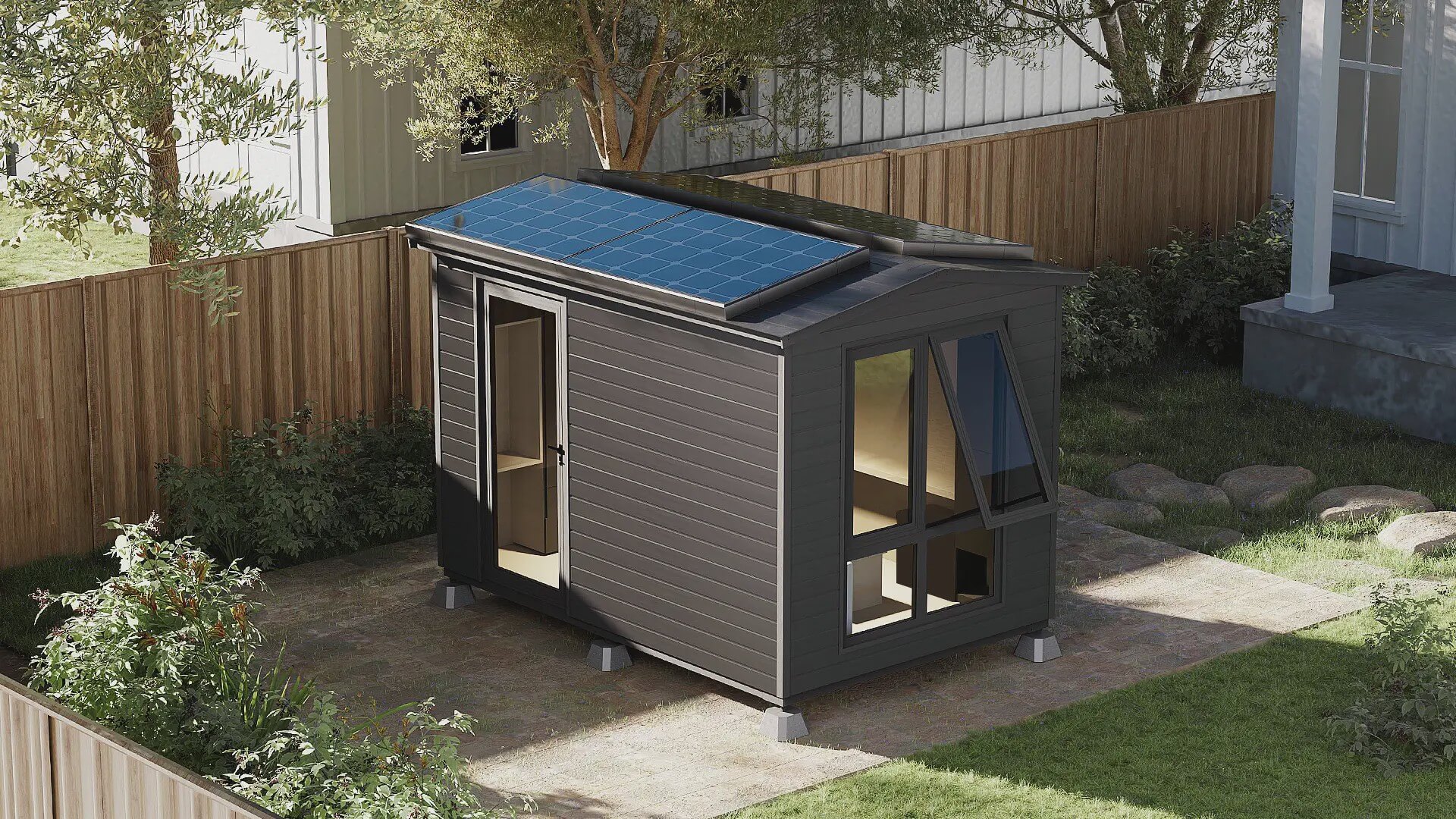
Ideal for Various Uses
Homeowners: Whether you're working remotely or need a quiet space for personal projects, Autonomous WorkPods are perfect for creating a separate, functional area that doesn’t require permits or long-term commitments. For those looking for different types of outdoor spaces, options like a man cave shed or a she shed offer great alternatives for personal or recreational use.
Freelancers and professionals: For individuals who need an environment free from household distractions, the WorkPod offers a dedicated space that fosters focus and productivity. If you're more into creative pursuits, consider a backyard art studio, or for gamers, a gaming shed could be a perfect fit.
Backyard offices: With more people working from home than ever, a WorkPod provides a professional, comfortable workspace right in your backyard. It’s designed to seamlessly integrate into your outdoor environment, offering you the freedom to work in a private, serene setting.
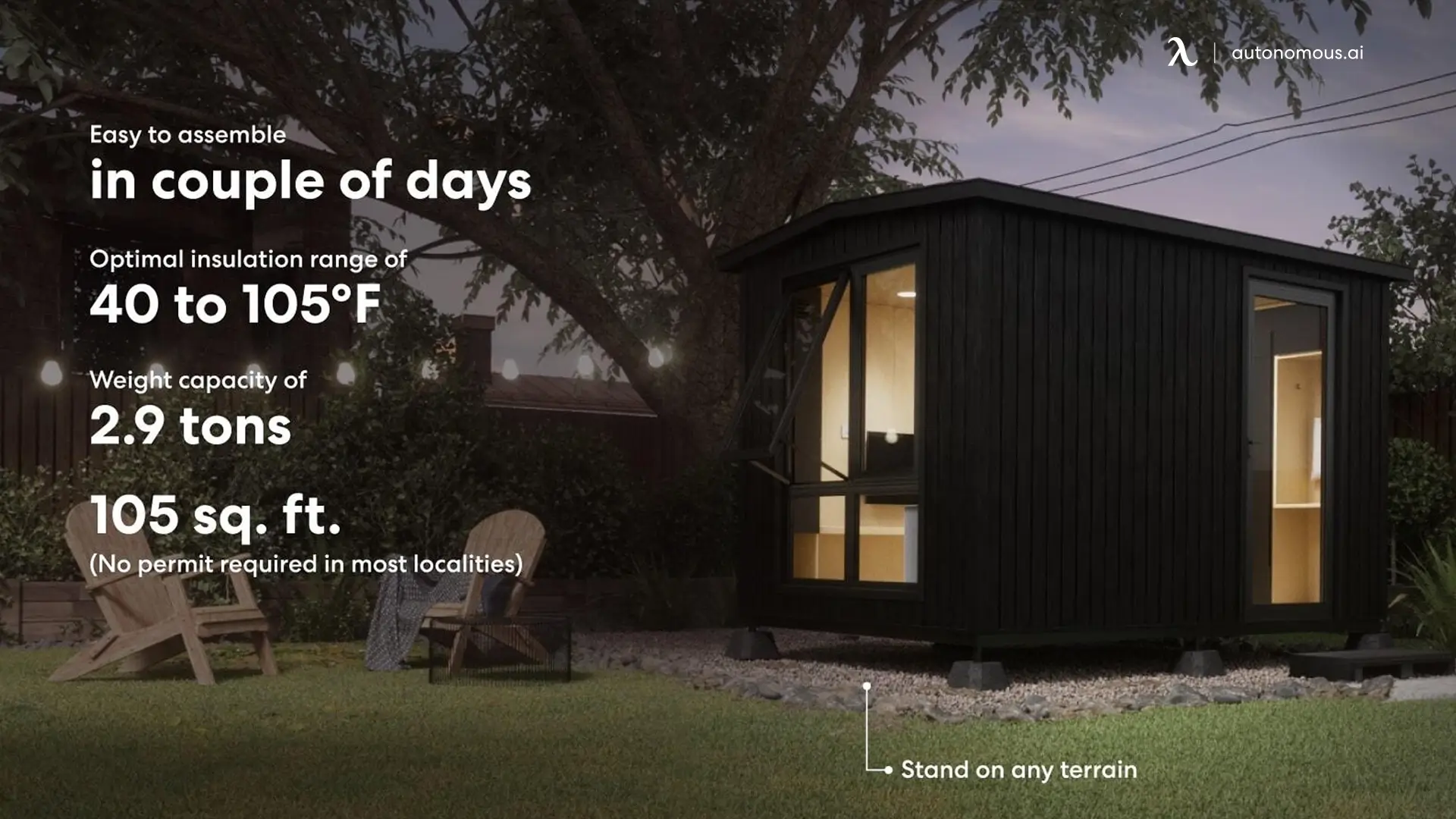
7. Frequently Asked Questions (FAQs)
What happens if you have an unpermitted addition?
If you have an unpermitted addition to your property, you may face legal and financial risks. Local authorities may issue fines or penalties, and you could be required to remove the addition or bring it up to code. It may also be difficult to sell or refinance your property, as most buyers will want proof that all structures comply with building codes. Furthermore, if there are safety issues with the unpermitted addition, insurance companies may not cover damages.
Do you need a permit for an ADU in California?
Yes, in California, most ADUs require a permit, especially if the unit is detached or involves significant construction like plumbing or electrical work. The specific requirements depend on local zoning regulations and whether the ADU meets the state's standards for safety, utility connections, and habitability. However, some smaller ADUs or units that use pre-approved designs may be eligible for a streamlined approval process.
How do you permit an unpermitted addition?
To permit an unpermitted addition, the first step is to assess the existing structure to ensure it meets the necessary safety and building standards. You will need to submit plans for approval to your local planning department, which may include upgrading the addition to meet current building codes. After your plans are approved, you'll schedule inspections to ensure compliance. Once the addition passes inspection and any required upgrades are made, the unit can be legalized.
Can an unpermitted ADU be legalized in California?
Yes, California has several programs to legalize unpermitted ADUs, such as the AB 2533 Amnesty Program, which allows ADUs built before January 2020 to be legalized through a streamlined process. The legalization process typically involves submitting plans, passing safety inspections, and making any necessary upgrades. Legalizing an ADU can help property owners avoid fines, increase property value, and ensure that the unit is safe for use.
Can I sell my property with an unpermitted ADU?
While it’s possible to sell a property with an unpermitted ADU, it may complicate the sale. Many buyers may be hesitant to purchase a home with unpermitted additions due to potential legal issues, insurance concerns, or the need for costly repairs to bring the property up to code. If you plan to sell, it’s a good idea to either legalize the ADU or disclose its unpermitted status to avoid future legal disputes.
How long does it take to legalize an unpermitted ADU in California?
The time it takes to legalize an unpermitted ADU varies depending on the complexity of the unit, the local jurisdiction, and the availability of inspectors. On average, the process can take anywhere from a few months to a year. Steps include submitting plans, scheduling inspections, making required upgrades, and obtaining final approval from local authorities.
Can I build an ADU without a permit in California?
While it’s possible to build an ADU without a permit, doing so is not recommended. Building without the necessary permits can result in fines, complications when selling or refinancing, and issues with insurance. Instead, property owners should go through the proper permitting process to ensure that the ADU complies with safety and building codes.
What are the benefits of legalizing an unpermitted ADU?
Legalizing an unpermitted ADU ensures that the unit is safe and compliant with building codes. It can increase the property value, make the unit eligible for rental income, and protect you legally in case of disputes or safety issues. Additionally, legal ADUs contribute to California's affordable housing stock, helping address the housing crisis in the state.
8. Conclusion
Unpermitted ADUs in California present both challenges and opportunities. With the right steps and knowledge, property owners can navigate the legalization process and enjoy the benefits of a safe, legal ADU. For those seeking a hassle-free solution, Autonomous WorkPods offer a compliant, functional alternative without the complexities of building a traditional ADU. Whether you're looking to legalize an existing unit or invest in a WorkPod, California homeowners now have more options than ever to create the space they need while staying on the right side of the law.
For more information on legalizing an unpermitted ADU, visit resources like Los Angeles City Planning's UDU Ordinance and the details about AB 2533 amnesty programs. If you're considering a junior ADU in Los Angeles, make sure to familiarize yourself with local guidelines and requirements. Additionally, understanding Los Angeles County setback requirements can help you navigate zoning laws effectively. For those interested in prefab ADUs, check out top prefab ADU companies in Los Angeles to find trusted builders that offer quick, cost-effective solutions.
Stay connected with us!
Subscribe to our weekly updates to stay in the loop about our latest innovations and community news!
Interested in a Link Placement?
Spread the word
.svg)




/https://storage.googleapis.com/s3-autonomous-upgrade-3/production/ecm/230914/bulk-order-sep-2023-720x1200-CTA-min.jpg)
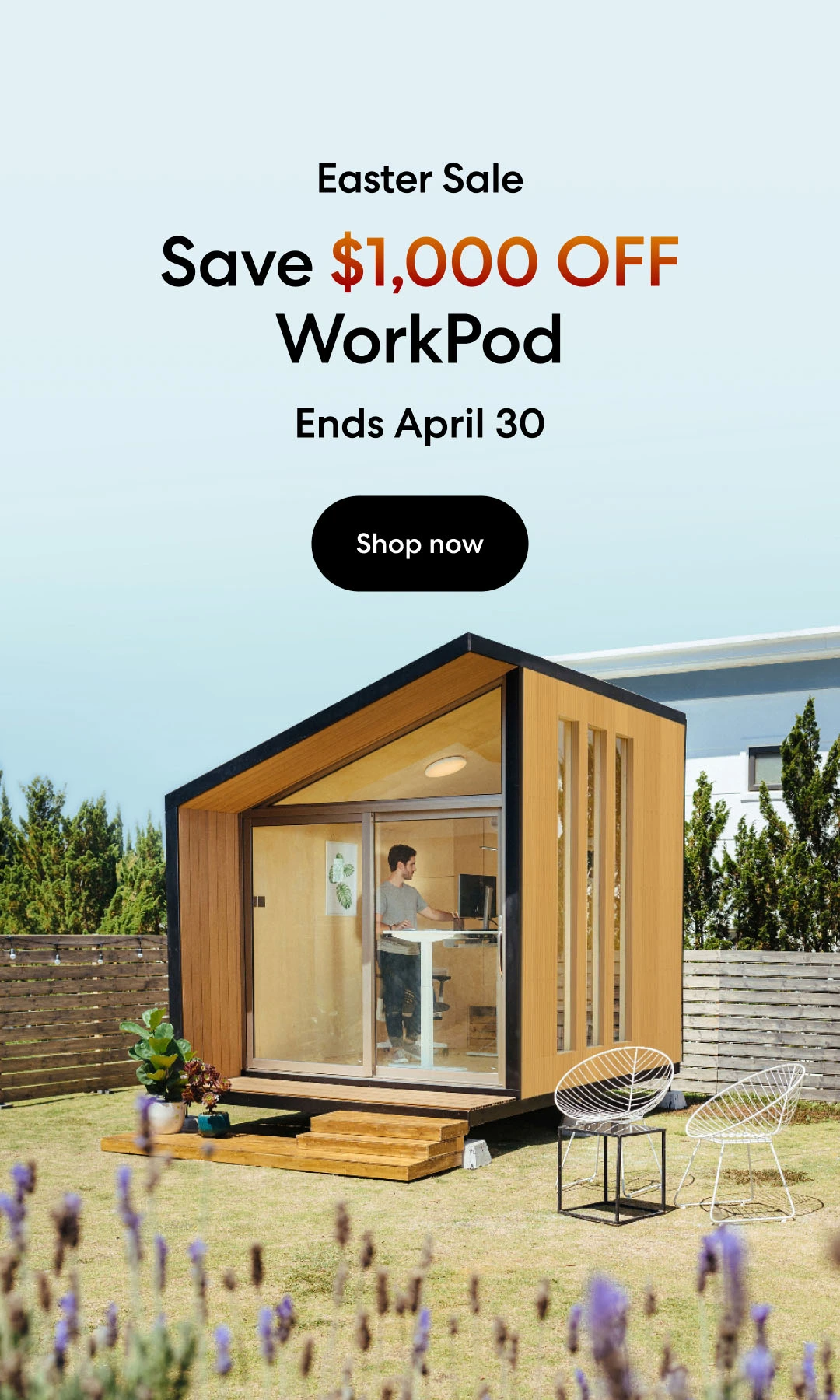
/https://storage.googleapis.com/s3-autonomous-upgrade-3/production/ecm/230824/image_tMoN47-V_1692155358869_raw-93ed49d8-7424-464e-bdfe-20ab3586d993.jpg)